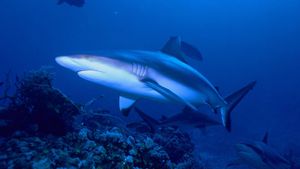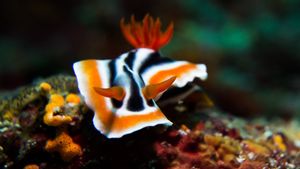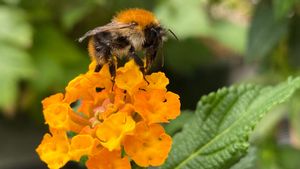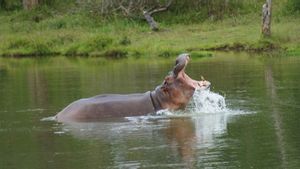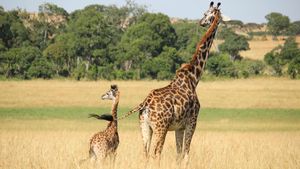JAKARTA - Said as one of the world's most secretive mammals, this small African antelope has never been seen in the wild. Only 41 individuals have been found in recent decades, embodied only by skulls and carcasses seen on the black market in Benin, Togo, and Nigeria.
The animal's name, Duiker Walter, commemorates Professor Walter Verheyen, the first scientist to obtain a specimen of this species from Togo in 1968.
To date, the International Union for Conservation of Nature (IUCN) considers the species too little known to be able to evaluate its conservation status, assessing it as a 'lack of data'.
But despite not being seen, researchers at a leading UK university have captured stunning images of the animal, published in the 'African Journal Ecology'.
The image was taken in Togo after scientists at WildCRU (Wildlife Conservation Research Unit) used remote cameras to monitor Fazao-Malfakassa National Park for more than 9,000 days.
The team is led by local mammologist Délagnon Assou, with a support team led by Dr. Neil D'Cruze.
"This graceful antelope, over the past 200 years, has shown an uncanny talent for evading scientists, but has tragically proved less adept at avoiding nets, snares, and hunting dogs," Professor David Macdonald, Director of WildCRU, told Euronews.

Dr. Gabriel H. Segniagbeto, assistant professor of taxonomy and zoological systematics at Lomé Togo University, explains how important it is to protect this area of biodiversity.
National Parks are threatened by illegal activities such as hunting, cattle grazing, timber exploitation, and bushfires, so land conservation is essential.
"It is important to realize the importance of the Togo protected area system, which acts as a vital bulwark for the rich diversity of wild mammals. We hope our exciting discovery, Walters Duiker's first live image in the wild, will increase calls for further protection of our remaining forests and savannas," Segniagbeto said.
SEE ALSO:
Through monitoring such a close area for a long time, the researchers also discovered other endangered species, such as aardvarks and mongoose called 'cusimanse', which had never previously been recorded in Togo.
The English, Chinese, Japanese, Arabic, and French versions are automatically generated by the AI. So there may still be inaccuracies in translating, please always see Indonesian as our main language. (system supported by DigitalSiber.id)



